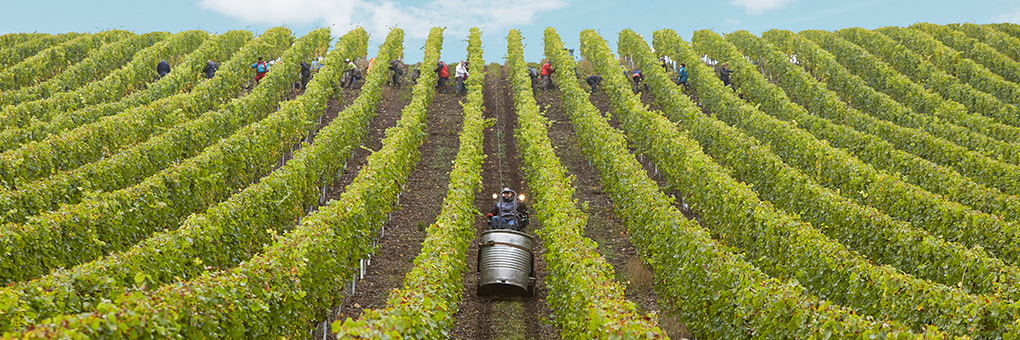
The 2014 Vintage
The 2014 harvest is finished. On October 25th 2014, the last Riesling must flowed into the historical cellar below Trier. The grapes were pressed and preliminary clarified in Scharzhof in Wiltingen on the Saar, as well as in Duisburger Hof in Eitelsbach on the Ruwer. The grape must is now fermenting in the cellars in the heart of Trier. The cask cellar, with its ceramic fermentation locks, gives every year a wonderful concert.
Harvest
The harvest began very early for the red grape varieties, on September 9th, because of the infestation of Drosophila suzukii also called vinegar fly in English. This affected the Frühburgunder and St. Laurent, but less the Spätburgunder. With a very selective harvest, the necessary quality standards were met, though at lower quantities. On September 30th, we started picking the Weißburgunder and the regional Elbling. The harvest for Riesling, which represents 95% of the total production, began on September 30th for the sparkling base wines and on October 6th for the still wines.
The average yield of the year was 55 hectoliters per hectares, about 10 hectoliters below the long-term average of 65 hectoliters. However, the yield extremely varied between the steep single vineyards and the somewhat flatter sites, as well as among the different river valleys of the Mosel, Saar, and Ruwer. The maturity levels were very different and didn’t always reflect the experience of the past years.
The quality of the harvest can be split as follows: 65% were harvested as Qualitätswein and Sekt basic wine, 15% as Kabinett from various villages and locations, 15% as Spätlese from many first-class steep hillsides, and 5% as Auslese from Dhroner Hofberger and Trittenheimer Apotheke on the Moselle, and Kanzemer Altenberg and Ayler Kupp on the Saar, which means that all levels of quality relevant to the market will be sufficiently available. The regular tastings of the casks are very promising. The musts and young wines show good extract values, well-balanced and well-integrated acidity, and clean fruit.
A Review of the Growing Season 2014
After a very mild and dry winter, it was followed by a very arid spring. An early flowering—without frost, rain, or hail—gave the region a very promising fruit set, with a good head start of three weeks, and a slight tendency to drought stress, depending on the site. At least, in the well-drained, stony, and steep sites, there was enough water until the end of June. Then came the very wet summer months of July and August. Unfortunately, it rained several times during the important month of September during the harvest, which forced a quicker pace to the harvest in order to avoid rot and loss of quantity.
